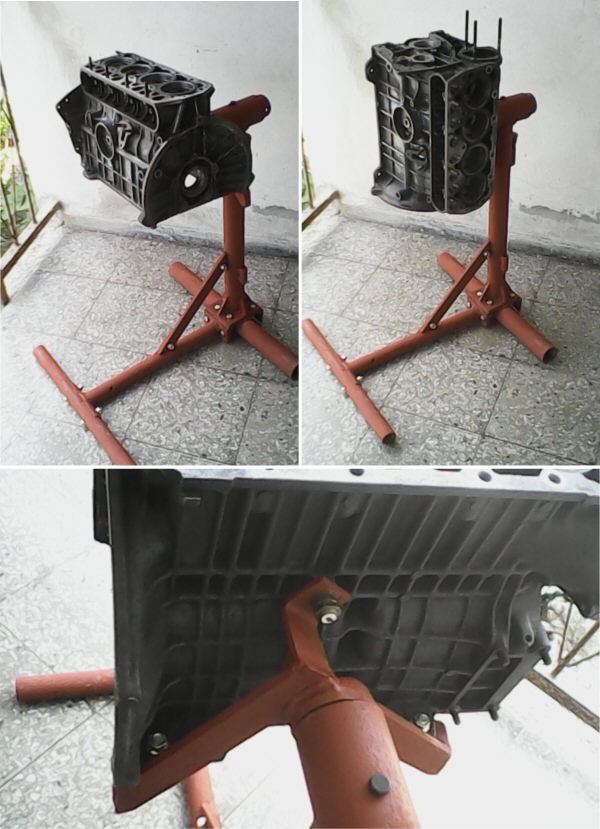I just finished building my own engine stand, however, I have (yet another) problem to solve: in the original Czechoslovakian manual I see the factory stand holds the engine from a side, holding it by two tabs it has at the bottom where the oil sump gets attached, and in the middle of that side by a threaded hole between cyls #2 and #3, but not passing through. The issue is that hole has some weird diameter and threading: a spark plug looks to have the same diameter, but the thread is like 1.25 however it fails to be such when I use the threads gauge.
As the engine will build up a lot of weight when adding its pieces (the head is cast iron, for instance), I'm concerned about that hole or any invention I can make with it. I thought about re-threading it to whatever the spark plug is, and then weld a rod to an emptied spark plug to make it a stub...could work but...
Question: Can I hang the engine by its rear side, the side that has the flywheel, the side that attaches to the gearbox, using the same studs it goes there? Would that hold the engine ok for assembling it? Or any other suggestions :)
Remember, engine block is aluminum.
Engine: Skoda 120 Estelle, 70's, RWD, rear end mounted.
EDIT: the stand they show in the original manual
EDIT: so I got scared with the idea of hanging the engine from its rear side: the stubs there are mere M8, maybe they are just for attaching the gearbox but I don't want the risk of breaking something there. This is the stand I made, and a pic shows how I resolved the hole problem by using a spark plug.



